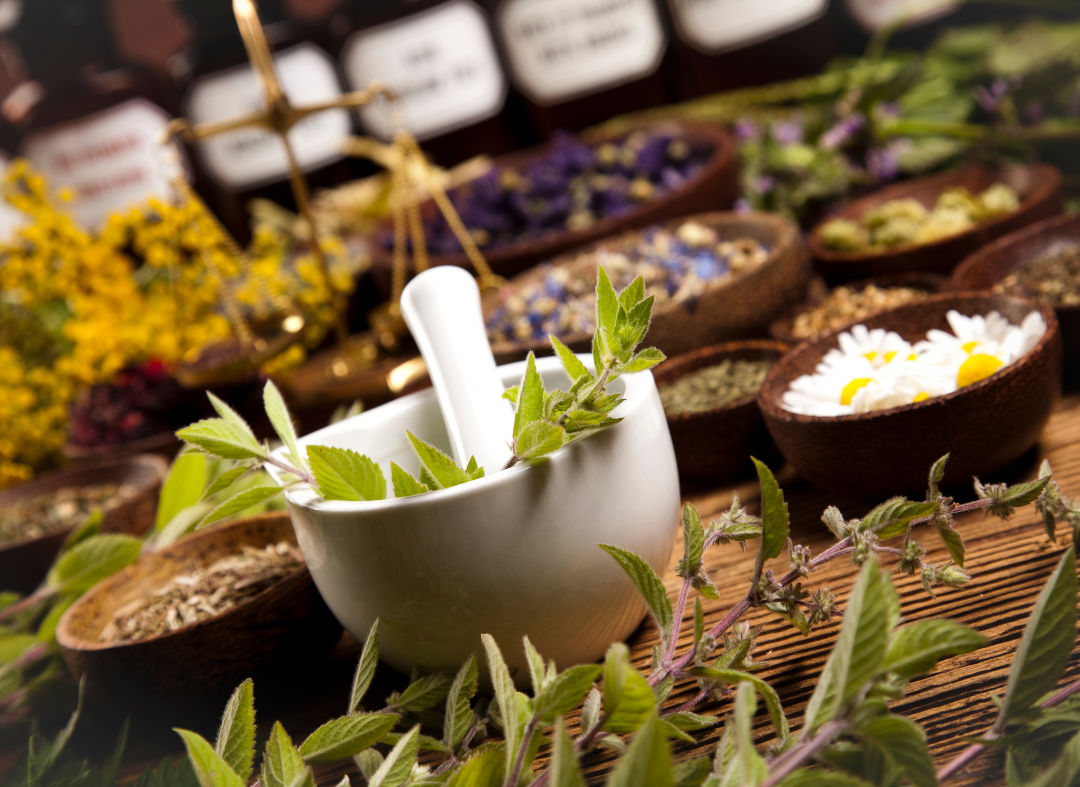Did you ever stop to wonder how herbalism and pharmacy are connected? Perhaps your current outlook is that the two are anything but related, but actually herbalism is the direct precursor to modern pharmacy practice. Pharmacy is more like a refined and reduced form of its herbal counterpart (think white flour vs whole wheat).
The history of pharmacy and herbalism share deep roots that trace back to ancient civilizations where plants were used as medicines. In fact, for much of human history, herbalism was the primary form of healthcare, and plants were relied upon for their medicinal properties. However, over time, pharmacy and herbalism diverged due to various factors, including the rise of modern pharmaceuticals, changes in medical education, and evolving regulatory frameworks.
The origins of pharmacy and herbalism can be traced back to ancient civilizations such as Egypt, Mesopotamia, China, and India, where medicinal plants were used to treat various ailments. Herbalism, also known as herbal medicine, relied on the use of plants, plant extracts, and other natural remedies to treat illnesses and promote healing. Herbalists, often referred to as apothecaries, were skilled in the identification, preparation, and dispensing of herbal remedies.
As societies progressed, herbalism continued to be a prominent form of healthcare, with knowledge passed down through generations. However, the development of modern pharmacy in the 19th and 20th centuries marked a significant shift in the approach to healthcare. The rise of scientific discoveries and advancements in chemistry led to the isolation and synthesis of active ingredients from plants, which paved the way for the development of modern pharmaceuticals.
In the early 20th century, the Flexner report, commissioned by the Carnegie Foundation, evaluated medical schools in the United States and Canada, and called for standardized medical education based on scientific principles. This report had a profound impact on the field of medicine and resulted in a shift towards a more scientific and evidence-based approach to healthcare, including pharmacy.
Pharmacy, as a profession, began to focus more on the preparation, compounding, and dispensing of synthetic drugs rather than relying on herbal remedies. The standardization of pharmaceuticals, along with the development of regulations and laws governing their production and distribution, contributed to the divergence between pharmacy and herbalism. Pharmaceutical companies emerged as key players in the production and marketing of drugs, and their influence grew over medical boards and regulatory bodies.
Pharmaceutical companies invested heavily in research and development, leading to the discovery of many life-saving drugs, which changed the landscape of modern medicine. This resulted in a shift towards pharmaceuticals becoming the dominant form of treatment in modern healthcare, with herbalism often considered complementary or alternative medicine.
Despite this divergence, herbalism has persisted as a practice in many cultures around the world, with a resurgence of interest in recent years due to growing awareness about natural and holistic approaches to healthcare. Some pharmacy programs and healthcare institutions also incorporate elements of herbalism and complementary medicine into their curriculum, recognizing the historical and cultural significance of herbal remedies.
The history of pharmacy and herbalism share common roots in the use of plants as medicines. However, with the rise of modern pharmaceuticals, changes in medical education, and evolving regulatory frameworks, pharmacy and herbalism have diverged, with pharmacy becoming more focused on synthetic drugs and herbalism often considered complementary or alternative medicine. The Flexner report and the influence of pharmaceutical companies on medical boards have been significant factors in this divergence. Nevertheless, herbalism continues to be practiced and valued by many as a holistic approach to healthcare.


